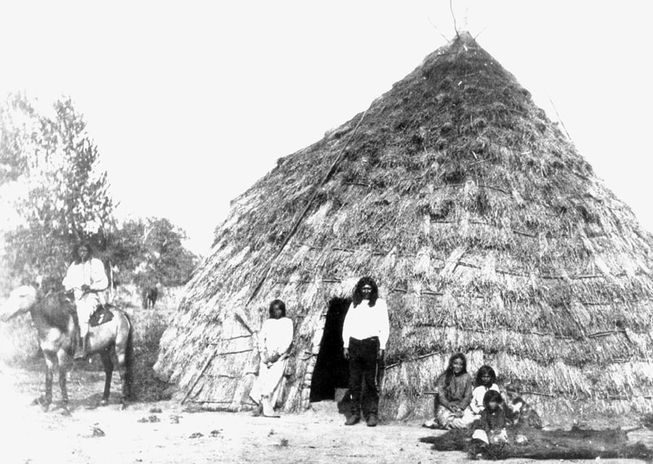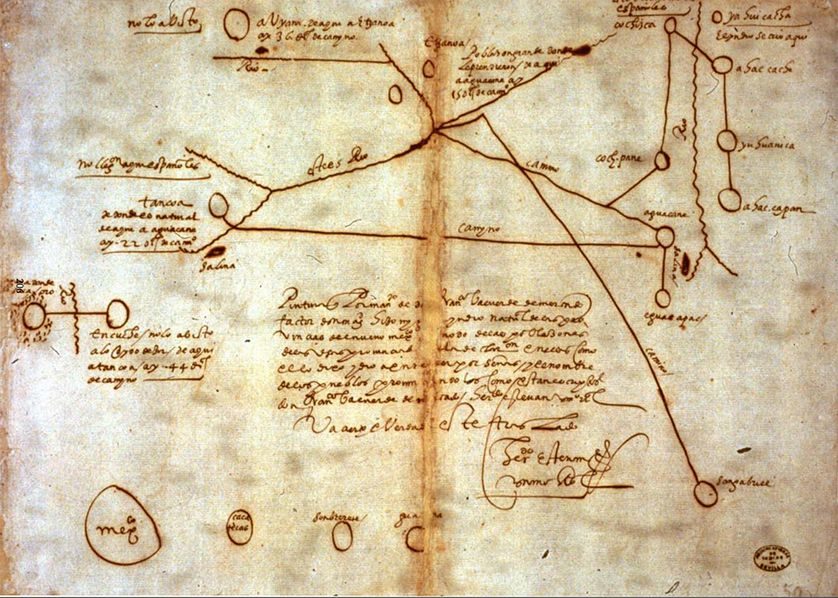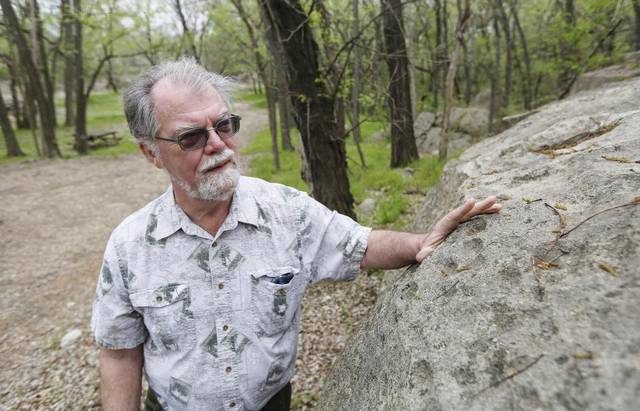
In 2013, scholars at UC Berkeley revisited a series of maps and texts written in 1601 by Spanish conquistadors about a failed expedition into the Great Plains region of the United States in search of gold and other treasures. Instead, the explorers detailed the discovery of a massive settlement of nearly 2,000 grass huts with an estimated 20,000 occupants.
Whereas earlier translations muddled the exact site of this city, labelled on the map as Etzanoa, the Berkeley researchers were able to interpret the accounts and accompanying maps with greater accuracy.

The place the Wichita State University archeology professor and his small team set out to scour in 2015 were fields just outside Arkansas City, Kansas. For as long as farmers have worked the land surrounding the nearby Walnut River, there have been tales of spectacular artifacts ranging from arrowheads to pottery being churned up in the earth.
"We always knew we once had a whole bunch of Indians living around here, because we had found way too many artifacts to think otherwise," Jay Warren, an Arkansas City commissioner, told the Wichita Eagle. "But we had no idea until Dr. Blakeslee came along about how big it was."
A thriving city
According to the freshly translated accounts by Spanish explorers, Etzanoa may possibly have been the largest settlement in North America in the early 1600s. Details included the presence of massive beehive grass huts laid out in clusters and separated by garden plots containing crops of corn, beans, squash and pumpkins.
"The soldiers counted approximately 2,000 houses in the two leagues (5 miles) that the Spaniards explored where the carts could go on the east side of the river," the official Etzanoa Conservancy website states. "The circumference of each of the round, grass-and-wood houses was approximately 70 to 80 feet. Each house was inhabited by an estimated 10 people. Thus, the total population was estimated at 20,000."
While the Native Americans residing in Etzanoa greeted the Spaniards peacefully, the conquistadors ruined all opportunity to learn more about the settlement after taking hostages, likely in an attempt to secure gold. The entire city then fled. When the expedition left the city after conducting a limited survey, they were ambushed by a tribe called the "Escanxaques." These warriors, an enemy of the Etzanoa people, were intent on raiding the empty city. Fortunately, the Spaniards were able to repel the attack and keep the settlement from further harm.
"The battle lasted off and on for the better part of one afternoon, with the Spaniards slowly working their way down and out of Etzanoa and across the (Arkansas) river," the website states. "Eventually the Excanxaques withdrew from the fight with the Spaniards."
Sifting through time
In the years since they first broke ground in the fields outside Arkansas City, Blakeslee, students from Wichita State University, and volunteers, have uncovered stone tools, weapons, and other evidence of the ancient Wichita people. To further support the 1601 accounts, they've also retrieved Spanish artifacts such as a rusted horseshoe nail, bullets, and cannon shot fired during the ambush.
As for what happened to the city, archaeologists believe it likely fell victim to European disease and warfare. By the early 18th century, when French explorers visited the region, barely anything of Etzanoa remained.
Now that word has spread of the city's discovery, Arkansas City officials say interest in visiting the site and learning more about the settlement has blossomed. Plans for a visitor's center are in the works, with limited tours already being offered for those wanting to see first-hand the artifacts being pulled from the earth. According to the LA Times, there's even hope of having the entire area designated a UNESCO World Heritage site.
"We're not talking about putting together a one-day wonder," Warren added to the Wichita Eagle. "We're looking at creating something that could be great for the region, and for 50 years and more down the road. We're talking with (Unified School District) 470 about how it could enhance education. And we think the site could also be a hands-on field training facility for archaeologists from all over the world."




Reader Comments
to our Newsletter